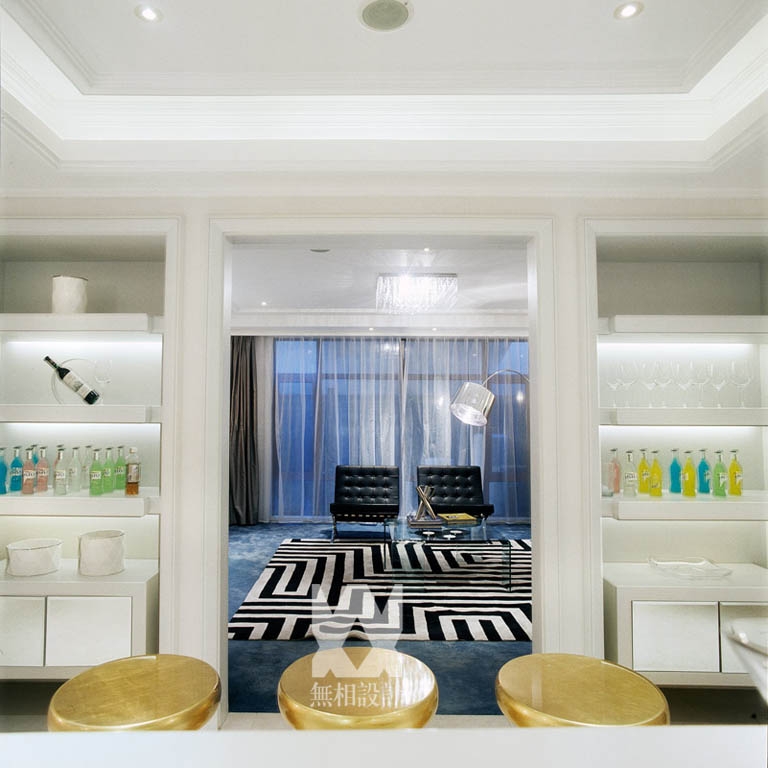JH Factory Complex Design XU Kai
2014-09-18 01:00
© Amelie Yang
(C)杨爱玲


架构师提供的文本描述。位于中国南部厦门的JH工厂区位于工业区,正处于向“城市”过渡的阶段,这意味着城市的住宅、商业功能等功能开始通过接管衰败的工业区而侵入该地区。工业和城市功能的结合形成了生动的城市场景和强大的生命力。
Text description provided by the architects. Situated in Xiamen, south of China, the JH Factory Complex is located in industrial zone which is in transition to a more “urban” area, meaning the city’s function like housing and commercial functions start to invade into the area by taking over decaying industrial areas. A mix of industrial and civic functions forms a vivid urban scenarios and strong vitality.


在这种情况下,20世纪90年代和21世纪初的中产阶级住房项目和工厂建筑在其前面和两侧,而一个庞大的非正式定居点(工人或工业等)则从背后拥抱着该地点。建筑规模、风格和材料种类繁多,在这样的环境中,一个新的参与者,在我看来,应该采取一种兼容和消亡的态度。
The site is in such scenario with middle class housing project and factory buildings from 1990s and early 2000s in its front and both sides, while a huge informal settlement (working class such as workers or the industries) embraces the site from the back. There is a big variety of architecture scale, style and material, and a new participant in such environment, to my vision, shall take an attitude of compatibility and extinguishment.


有两种观点主导了这个项目。首先,它将是一个“堡垒”,一个堡垒,以遏制其工业活动,并以某种方式提高其庞大的规模,封闭的体积和几乎没有特色的材料展示。换句话说,建筑的特征应该是“淡漠的”,而是“神秘的”,它不是从费力的呈现中获得的,而是从克制的呈现中获得的。对我来说,“工业建筑”应该是这样的。
Two visions dominate this project. In the first place it shall be a “Fort”, a fort to contain its industrial activity and somehow boost on its massive scale, enclosed volume and almost characterless material presentation. In other word, the character of the building shall be “Indifferent” but “Mysterious”, a character gained not from effortful presentation but from restrained presentation. For me, an “industrial architecture” shall be in this way.
© Amelie Yang
(C)杨爱玲


一个巨大的砖块立方体被复杂地分成两卷,而两种形式之间的相互关系是漂浮的底层(用于产品展览)、东南的主要入口,以及两卷之间的长“光隙”,这将成为空间组织的核心。前面的体积变小,变成R。
A massive brick cube is complexly split into two volumes, while the interrelation of two forms the floating ground floor (for product exhibits), the main entrance in the south-east, and the long “light gap” between the two volumes that is to become the core of the space organization. The slimmer volume in the front becomes the R&D part, and the more massive volume in back becomes the factory part.




在书的表面只做了很少的接触。尽可能少的基本窗户(只是为了确保办公室的灯光)和一系列阳台,从两层高到三层高不等。一些阳台被转换成露台,标志着“光隙”的重要部分。
Only very few touches are done on the face of the volumes. Basic windows as few as possible (only to ensure the lightings of the office) and a series of balconies varies from two storied high to three storied high are to be put on. Some balconies are conversed to terraces to mark important sections of the “light gap”.
© Amelie Yang
(C)杨爱玲


最后,作为该项目最重要的愿景,通往天堂的大楼梯构成了核心空间,在我看来,它将包含人类的同情和勤奋精神。在两个体积之间的“光隙”内,两块高的砖墙(4米距离)被近20米高和60米长的高墙所拍打,从地面(连接入口大厅)架设了一个巨大的楼梯,连接到R的不同层次。
Finally, as the most important vision of the project, a grand staircase leading to heaven, forms the core space that in my opinion shall contain human sympathy and spirit of industry. Within the “light gap” between two volumes which are clapped by two high brick walls (4 meter distance) of almost 20 meter high and 60 meter long, a huge staircase is erected from the ground level (linking the entrance hall) through different levels with link to R&D sections and factory sections on two sides, finally to the fourth floor where big inner terrace is settled.




楼梯尽头和两面墙之间屋顶窗户的光线有助于强化“通向天堂”的形象。除了由大楼梯提供的连接外,两墙还通过另一端的体积(桥梁)连接,提供必要的功能连接,以及在六楼的另一个平台,从该平台规划对缺口的总体角度。
Light in the end of the staircase and from the roof window between two walls helps to reinforce the image of “Leading to Heaven”. Besides the linkage provide by the grand staircase, the two wall is also connected by volumes (bridges) in the other end that provides necessary function linkage as well as another terrace in sixth floor from which overview angle to the gap is planned.
© Amelie Yang
(C)杨爱玲


从功能上讲,大楼梯是不同功能之间循环的核心空间。它作为工厂之间的日常流动,在不同的故事中,以及在R之间。
Functionally speaking, the grand staircase is the core space for the circulation between different functions. It serves as daily movement between the factories in different stories as well as between the R&D and factories. In early morning or in nightfall, when the strong sun from east or west slides in the “light gap” and hundreds of employees go up the staircase for their work or go down the staircase from their work, a strong “spirit of place” is in rich abundance. And during the working time, the space is changed into another cinematic scenario, which is “emptiness” or “space without participant”. From time to time, when employees crossing by, they may stand for a while and merely watch it, when the power of space may cast on him or her.


































Architects XU Kai
Location Huli, Xiamen, Fujian, China, 361009
Category Refurbishment
Area 9500.0 sqm
Project Year 2010
Photographs Amelie Yang
























